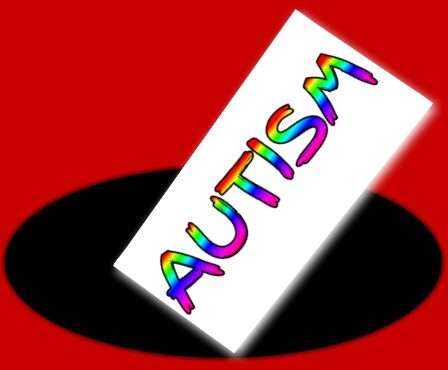Introduction
You may be wondering, what is coeliac disease? Coeliac disease is an autoimmune disease that is inherited genetically. A person without coeliac disease can process gluten (which is a protein) without any risk, but in a person with coeliac disease, the villi in the large intestine (which absorb nutrients from the food you digest), become damaged, and go flat. Villi that are flat can take months to stand up and recover again.
What happens to the villi?
This flattening of the villi damages the large intestine’s ability to draw nutrients and minerals, like iron and vitamins which are required for red blood cells and other important things the human body needs to function. This depletion of iron (which carries oxygen in the red blood cells throughout the body) can lead to a condition known as jaundice which in turn is caused by anaemia (lack of iron in the blood). When the immune system attacks the large intestine in response to gluten, this condition is known as coeliac disease. (The villi are cells inside the walls of your large intestine that are shaped like tubes and number in their thousands to millions).
Coeliac disease eventually results in the large intestinal villi atrophying and reducing in number throughout the large intestine. If the affected individual continues to eat/or drink gluten, the large intestine may no longer absorb nutrients and minerals. This condition is known as gut malabsorption, and can lead to osteoporosis, anaemia, weight loss and other complications.
The immediate symptoms are often diarrhoea, migraine headache, bloating, vomiting, raised temperature & sweating. Not everyone with coeliac disease will experience a reaction this way. It is different with every sufferer.
Does coeliac disease affect me?
Yes it does. Coeliac disease limits my diet to strictly gluten-free foods and drinks only. While I do not show any symptoms of coeliac disease, I do have it, as I was diagnosed through a genetic test since I have a family history of coeliac disease. About 1 in 170 people (Lebwohl et al., 2015), could have coeliac disease and this could vary by country. Certain coeliacs (like me) can show no obvious symptoms at all, making it very hard to diagnose until a blood test, genetic test or a biopsy is taken. In my case it was anaemia that alerted further investigation which led to diagnosis of coeliac disease, as I also have a parent diagnosed with coeliac disease.
Possible link between autism and coeliac disease?
There may be a possible link to coeliac disease and autism. This is further supported by medical studies that have indicated that there may be a connection with autoimmune conditions (like coeliac disease) and autism. Many people with a family history of autoimmune conditions such as coeliac disease are more likely to have a diagnosis of autism (Lau et al., 2013). Interestingly, one study has shown that mothers who had coeliac disease were three times more likely to have autistic kids (Atladóttir et al., 2009).
Ingredients in foods that contain gluten
There are a lot of food ingredients out there that contain gluten. This list shows some of the ingredients to watch out for:
- Wheat Gluten
- Barley
- Rye
- Malt Flavouring
- Hydrolysed Wheat Protein
- Malt Extract
- Malt Syrup
- Malt Flour
- Malt Vinegar
- Seitan
- Semola
- Spelt
- Starch
- Triticale
- Wheat
- Wheat Starch
There are too many gluten ingredients to list in this page.
Treatments
The treatment process of coeliac disease involves being on a very strict gluten-free diet which is lifelong. Some foods (like hot chips) may be gluten free, however when they have been cooked in the same oil, which has also been used to cook foods containing gluten, the gluten-free food has become cross-contaminated. So what was originally a gluten-free product or gluten-free food now has gluten on it, and cannot be eaten by a person with coeliac disease. It is advisable to ask whether or not the oil in which the gluten-free hot chips are to be cooked have not been used to also cook gluten products in.
A picture of what gluten commonly looks like in wheat

Wheat is used in many products made with gluten, which range from pastries, breads, biscuits, to confectionaries, cakes, and many savoury / sweet snacks. Many of these products are slowly becoming Gluten Free or GF, which can be eaten by coeliacs.
Princess Lilli Lilac

Although Lilli has nothing to do with gluten, she does help keep me calm and relaxed. We have been inseparable since the day we met when she was a kitten, and we love each other very much. 💜
Conclusion
Hopefully, you have learned a bit about gluten and autism today. See you on the next blog post! 😃
References
Lau, N.M., Green, P.H., Taylor, A.K. (2013). Markers of celiac disease and gluten sensitivity in children with autism. PLoS ONE, 8(6), Article e66155. https://doi.org/10.1371/journal.pone.0066155
Atladóttir, H.O., Pedersen, M.G., Thorsen, P. (2009). Association of family history of autoimmune diseases and autism spectrum disorders. Pediatrics, 124(2), 687-694. https://doi.org/10.1542/peds.2008-2445
Lebwohl, B., Ludvigsson, J.F., Green, P.H (2015). Celiac disease and non-celiac gluten sensitivity. BMJ, 351, h4347. https://doi.org/10.1136/bmj.h4347
